UK Experts discuss Quantum's impact on Comms
7 May 2019
Experts from across the UK recently convened at UCL to discuss the potential impact Quantum Technology could have upon Communications Systems.
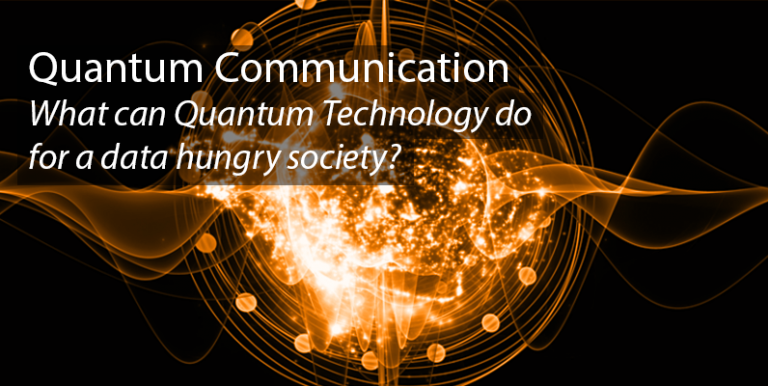
Author Robert Thompson, ICCS Manager
 Quantum Technology | Communication Systems | Quantum Communications | Future Networks
Quantum Technology | Communication Systems | Quantum Communications | Future Networks
Earlier this month academic and industry experts from across the UK came to UCL to answer the question "What can Quantum Technology do for a data hungry society?".
The event was hosted by UCL's Institute of Communications and Connected Systems (ICCS) and Quantum Science and Technology Institute (UCLQ). A cross-faculty collaboration the event explored how the fundamental studies in quantum mechanics are now showing demonstratable use-cases in the engineering world.
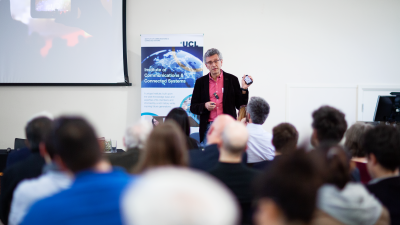
Referring to the challenges that Quantum Technology could be used to address Professor Darwzeh said:
“Billions of devices implies trillions of connections [within the network], with some devices requiring amazing computational power. It is expected that quantum technologies will be ablle to address some of the problem this creates with secure transmission of information, finding efficient ways to transmit signals through [communication] channels, and dealing with the increasing complexities of the physical network and its connections.Billions of devices implies trillions of connections [within the network], with some devices requiring amazing computational power. It is expected that quantum technologies will be ablle to address some of the problem this creates with secure transmission of information, finding efficient ways to transmit signals through [communication] channels, and dealing with the increasing complexities of the physical network and its connections.
The evening continued with talks from Professor John Morton, director of UCLQ; Professor Tim Spiller, Director of the UK Quantum Communications Hub; Iain Monteath of British Telecom's Cyber Assesment Lab; Professor Lajos Hanzo, Chair in Telecommunications at the University of Southampton, and Professor Alexandra Olaya-Castro, Quantum Biologist at UCL Physics.
Presentations covered a diverse range of perspectives of the topic with Professor Morton giving an introduction to the fundamentals of Quantum Mechanics that are being harnassed for applications in communication systems.
Topically, Professor Morton went on to draw parallels between Quantum Mechanics and Brexit, alluding to concepts of superposition in which systems can exist in two opposing states at the same time. Most famously described by the Schrodinger's Cat thought experiment.
Professor Spiller gave a summary of Quantum Systems already being demonstrated within the field of Communications and introduced the £270M national programme for quantum technologies. Focusing on the application of Quantum Technology to secure communication he said:
If 'Alice' sends quantum things to 'Bob' then if someone intercepts them in the middle they cannot avoid introducing disturbance, and this is a fundamental disturbance built into natue, so any evesdropper can be found out.
Summarising some of the recent achievements in Quantum Communication, Professor Spiller described a working prototype that has been developed for secure communications between a mobile phone and a local device such as an ATM, your employer or the government. He went on to describe demonstrations of Quantum communication between electronic chips, allowing secure information sharing between electronic devices.
While these examples focus on the sharing of Quantum Keys or 'Quantum Passwords' Professor Spiller explained that over the next 5 years they will look to demonstrate applications that move beyond Quantum Key Distribution. These future technologies will be demonstrated on the UK's first quantum fibre network, a national network of regular optical fibre, aiding in the understanding of commercial viability for quantum communication.
Exemplifying the current commercial appetite Iain Monteath from BT described the companies investment and work in the area. He explained how you can already buy, install and use commercial hardware for the distribution of Quantum Keys, however compatible use-cases for these technologies are very specific.
With the market for quantum technologies being new, Iain explained that BT is actively engaging customers in pilot projects, looking for trial customers and working institute, vendors and start-ups to explore developments and new use-cases for the field.
The final two speakers of the evening both came from academia with Professor Lajos Hanzo giving an overview of his work in the area, particularly focusing on an understanding of what realistically within communication systems can be moved from the current classical approach to a more quantum-based system.
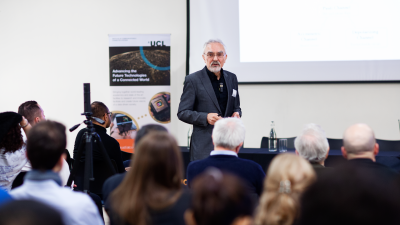
The final speaker Professor Alexandra Castro approached the subject from a biological perspective, explaining how Quantum Processes in biological systems could inspire the design of future Quantum Technologies.
She explained how processes such as photosynthesis are extremely efficient (~90%), and understanding how these systems achieve this could be key to designing quantum systems of the future. In addition, the variety of the biological world provides designs for multiple use cases, in the example of light harvesting, it can be seen that within different plants the structure of light-harvesting antennas has adapted for the specific requirement and tailored wavelengths of light that most suit the individual plant.
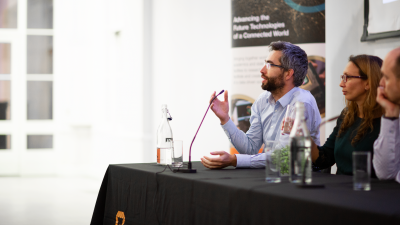
Professor Morton responded:
There is this spooky-action at a distance that allows you to know the state of one quantum thing, by reading the state of another ... which can be seperated on oposite ends of the universe. You can use this for somethign called 'teleportation', where you send a quantum state from one to the other, however for transmitting data you will always need to acompany this with some classical infromation in order to measure the quantum state change. Unfortunately this classical channel will always be limited by the speed of light.
Thanking the audience Professor Darwazeh commented on the diverse range within the audience, from leading academics in the field to secondary school students who had attended the event.
Referring to a famous quote by theoretical physicist Richard Feynman Professor Darwazeh closed by saying
It was once said 'if you think you understand qunatum mechanics, you don't understand quantum mechanic.' But I hope you understand a little more about Quantumm Communication now.
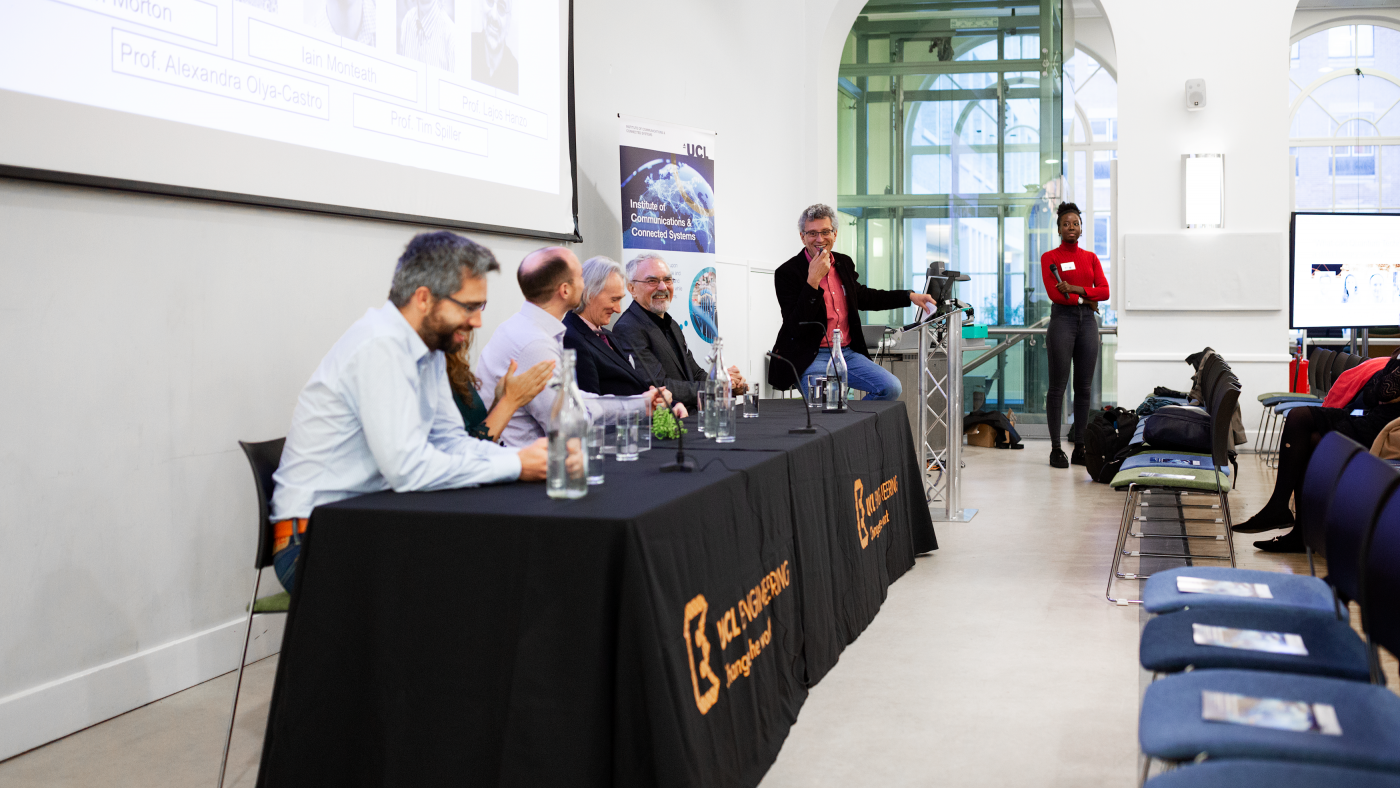
 Close
Close

